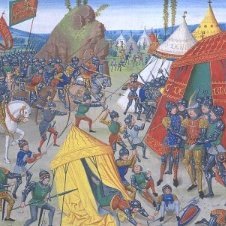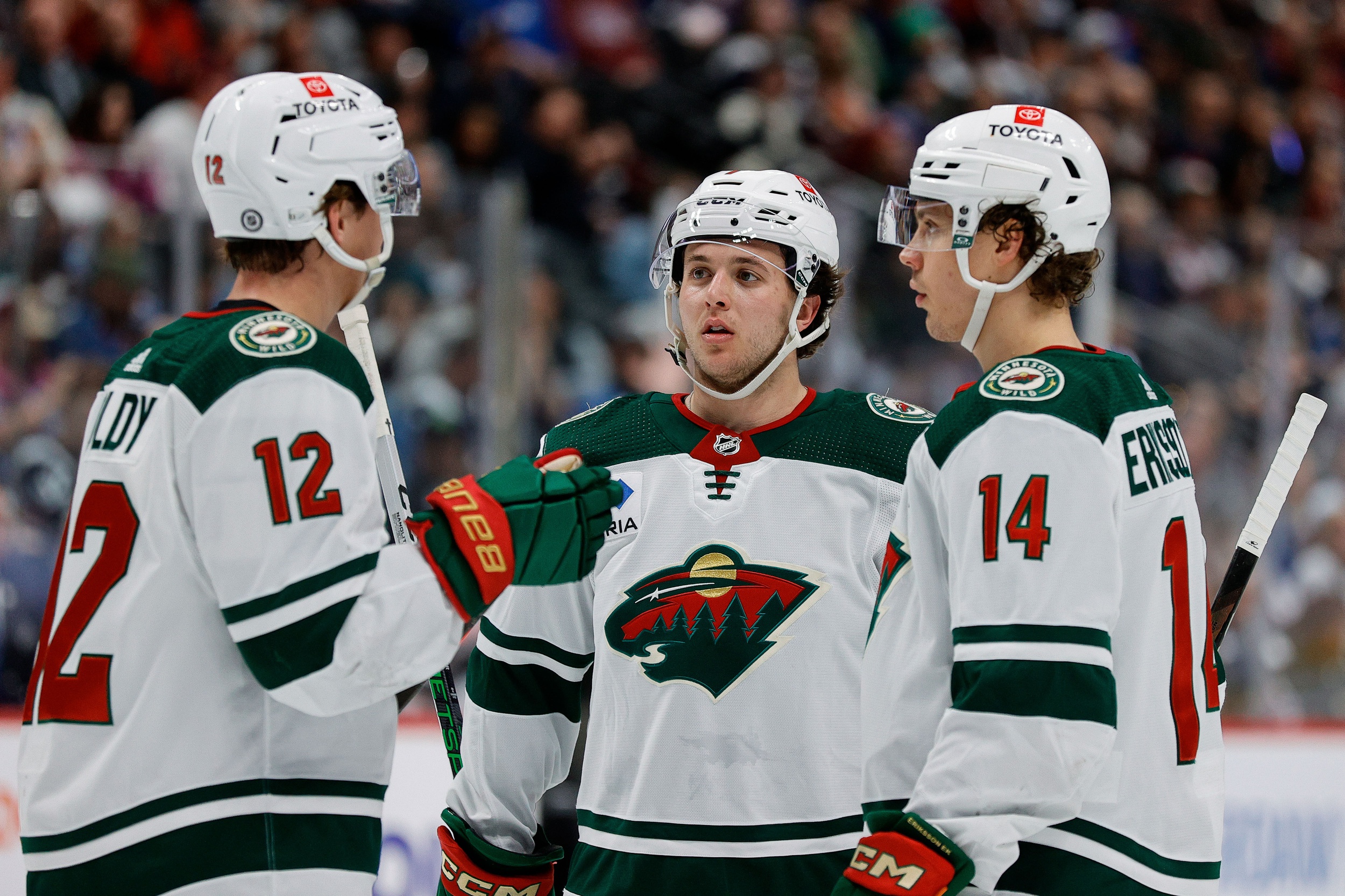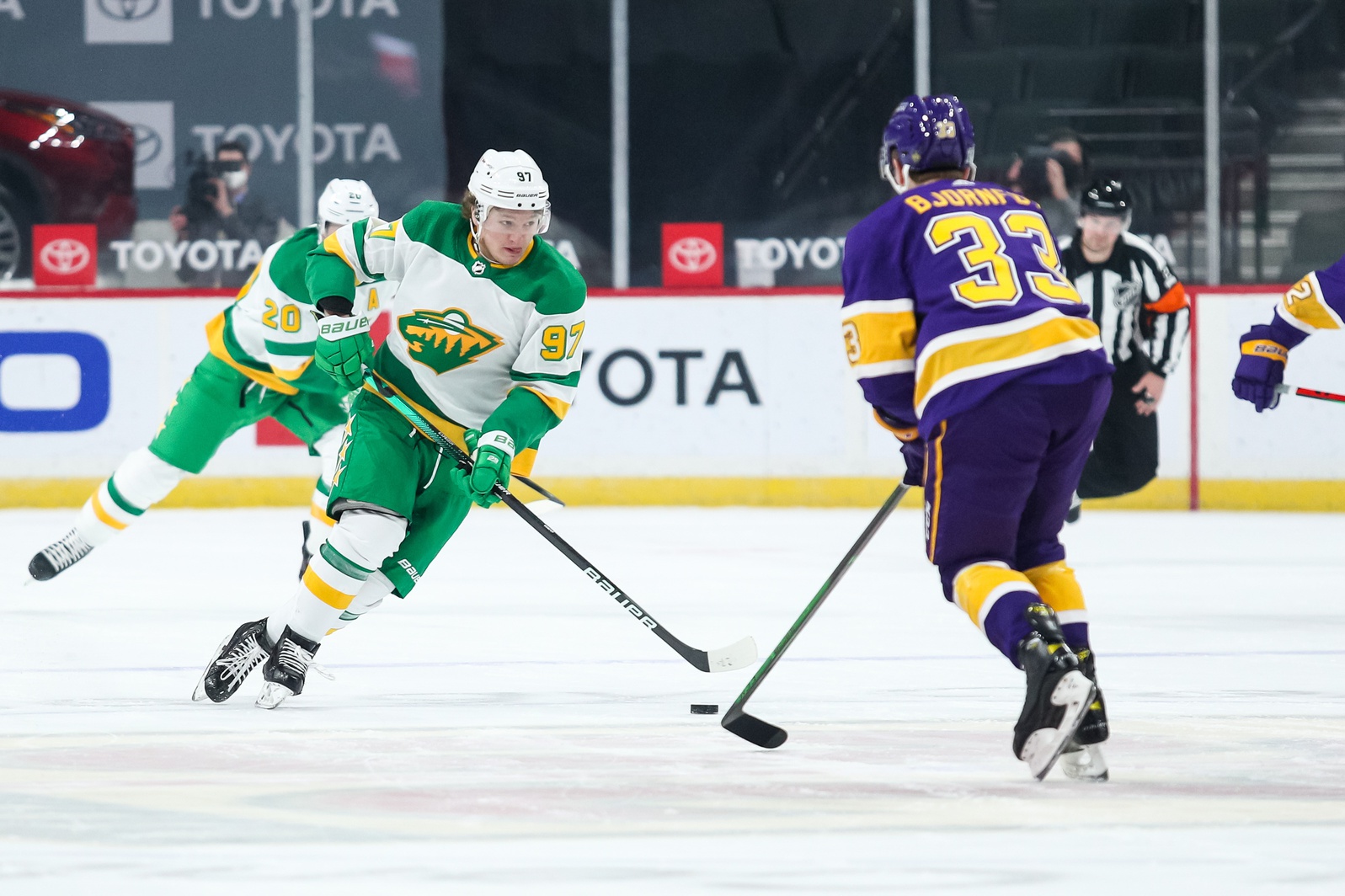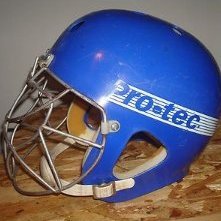Search the Community
Showing results for 'identity'.
-
Article: Maybe Christmas Just Isn't the Wild's Thing
mnfaninnc replied to Chris Schad's topic in Minnesota Wild Talk
What's more adorable than puppies for Christmas, and we could have 5 of them. The Wall, Jiricek, Buium, Ohgren, and Yurov. A whole litter of puppies. And, just as puppies do, they grow into being dogs. I'm very hopeful we're getting big dogs and not those little yappy ankle biters. In addition to those, we've added to strong NHL bodies. We subtracted some guys in Freddy and Merrill who really weren't (Merrill had height, but he was not very physical). Our 4th line will have an identity and not look lost in the wind. Our 2nd line has got some bite to it. I'm wondering about this top 6: Boldy-Rossi-Kaprizov Zuccarello-Ek-Tarasenko My expectations aren't SCF this season, and I think we probably squeak into another WC spot. But I do think we can get through the 1st round. If we're healthy, I think we go into the playoffs hot and are a team nobody wants to face. I'm anticipating 1 more subtraction, I don't know who it will be. -
After a long drought where center after center who the Minnesota Wild may have targeted came off the board, we finally have news that the team is connected to concrete, available names. The Athletic's Michael Russo reported Thursday that the Wild have "inquired about" Wild Legend Charlie Coyle and the New York Islanders' Jean-Gabriel Pageau. It's not "Christmas Morning," but theoretically, Coyle and Pageau should help upgrade the Wild at a position of need. Since leaving Minnesota in a trade for Ryan Donato in 2019, Coyle has been firmly planted at center, scoring about 18 goals and 43 points per 82 games since the 2019-20 season for the Boston Bruins and Colorado Avalanche. Pageau is in the final year of a six-year pact with the Islanders, having scored about 16 goals and 41 points per 82 games over the life of the deal. At first, it appears that the two centers are the same picture. They're decidedly third-line centers who can move up the lineup in a pinch, with a high floor and low ceiling. Coyle and Pageau have some skill to offer, but if they're your first- or second-line center, you're probably in trouble. Their cap situations are also a virtual wash. Coyle is in the final year of a deal that pays him $5.25 million against the cap, while Pageau is making $5 million against the cap in his walk year. That extra $250,000 won't make much of a difference. But one's gotta be better, right? Or at the very least, one has to be a better fit for what the Wild need. Let's quickly compare the two centers and determine which one Minnesota should pursue more aggressively on the trade market. While Wild fans know Coyle well -- he played 479 games in Minnesota, after all -- they don't quite know what they'd be getting from him every day. During his tenure with the Wild, Mike Yeo and Bruce Boudreau never could figure out where to play him, often swapping him back and forth between center and the wing. Since then, Coyle has his position and identity. He's taken at least 500 faceoffs every season (50.0% win rate) since 2019-20, standing firmly in the center camp. However, his skill set hasn't changed much since he left. Instead, he brings aggressively average skills in a big, fast body. That sounds like a backhanded compliment, and maybe it is. Still, having average skills for an NHL player is pretty damn skilled. It's just to say that he doesn't quite have the hands to be a 20-goal scorer or 60-point player regularly. But when you put average skills in a 6-foot-3, 215-pound frame, plus strong wheels (87th percentile in top speed in 2024-25, per NHL EDGE)... now you're getting somewhere. However, that somewhere is "perfectly average in almost every way." Sifting through All Three Zones' player tracking project, almost any chart you want to look at -- whether it's shot contributions, scoring chance contributions, zone entries, zone exits, forechecking -- you're gonna see Coyle's name towards the middle of the pack. Again, that's more complimentary than it sounds. Coyle is no longer the defensive player he was in Minnesota. Still, he can drive offense at even strength, and that's something the Wild would greatly benefit from. Coyle also brings a level of consistency to the table. Over his past four years (starting from last season), Evolving-Hockey has rated him as being worth 1.7, 0.8, 1.7, and 1.7 points in the standings. It's as close to clockwork as you can get in hockey. While Coyle represents a jack-of-all-trades type of upgrade down the middle, the promise of Pageau is one of fixing more specific issues in Minnesota. Russo summed up his league-wide reputation, saying, "Pageau is especially intriguing. He’s a perennial 40-point guy who is excellent in the faceoff circle (59.6 percent last season and over 50 percent every year of his career) and on the penalty kill." Pageau's reputation as a defense/penalty kill type of center goes back nearly a decade. He's gotten Selke votes (though never finishing higher than 13th) in five of his 13 seasons. But that reputation, at this point in his career, is simply that: a reputation. It hasn't been backed up by his actual defensive play during his five years in New York. On the surface, Pageau seems like a strong penalty killer. Over the past five years, he's allowed 7.12 goals per hour when shorthanded, which ranks 68th in the NHL among 162 forwards with 300-plus PK minutes. In fairness to Pageau, he's been elite at getting offense on the penalty kill. During the same timeframe, only Mika Zibanejad (21 points) and Scott Laughton (20) can claim to have more shorthanded points than Pageau's 18. However, under the hood, this seems to be at least partly a product of having Ilya Sorokin and Semyon Varlamov in net for most of those games. Of our 162 penalty-killing forwards, Pageau has benefitted from an .883 on-ice save percentage, the 23rd-best in the NHL. Joel Eriksson Ek and Marcus Foligno are the Wild's top-minute getters on the PK over the last five seasons. Both players have gotten walloped -- over 9.30 goals against per hour and bottom-20 of our group of 162 -- but their goaltending has been much shakier. Removing goaltending from the equation, Eriksson Ek and Foligno limit scoring chances more than Pageau does shorthanded. Foligno holds opposing power plays to 7.66 expected goals per hour (59th of 162), contrasted against Pageau's 9.07 expected goals against per hour (138th). The gap between Eriksson Ek (8.84 xGA/60; 133rd) and Pageau is smaller, but Pageau's pure defense isn't an upgrade from what Minnesota already has. Nor is it an upgrade from Charlie Coyle, our beautiful Mr. Average. Coyle is tied for 65th in actual goals allowed per hour (7.00) and 37th in expected goals allowed per hour (7.37). Now, Pageau turns the tide more often -- he ranks 18th with a 21.1% goal share when shorthanded. It's fair to say that pressing for offense might deflate his defensive stats, especially when he's been so successful at getting points on the kill. But will that continue without having a rock like Sorokin in net? Having one of the most talented goaltenders in the world behind you makes a team more confident in gunning for offense. If Pageau miscalculates on the Islanders and the puck goes back the other way, then Sorokin has a decent chance of making that mistake go away. Those flubs are much more prone to going in the back of the net in Minnesota. Without knowing if Pageau's PK success can continue after a move to St. Paul, it seems that Coyle would be the more attractive target. If Pageau can't contribute on the penalty kill like he has on Long Island, the Wild are stuck with a player that is a lateral move from recently-traded Freddy Gaudreau, only with a $5 million price tag instead of $2 million. If Coyle doesn't work on the penalty kill, then Minnesota's not in a worse spot than they've been lately, and they have a player who contributes more in other areas. Neither would light the Wild's world on fire, but if they have to choose between a one-year rental of two seemingly similar players, Coyle feels like the obvious way to go.
- 22 comments
-
- 2
-

-
- minnesota wild
- nhl
-
(and 2 more)
Tagged with:
-
As February commences, teams are gearing up for their playoff runs. The Minnesota Wild sit third in the Central Division and are still 7 points clear of the Calgary Flames for the second wild-card spot. While Minnesota’s playoff spot is relatively secure, it’s undoubtedly more precarious than earlier in the season. Injuries to stars like Kirill Kaprizov have left the team looking for answers on how they can hold onto their spot in the postseason despite a lack of roster depth. Minnesota needs to win to secure its spot in the postseason, and a group of unlikely heroes has emerged. The Wild’s fourth line was crucial in some of their recent wins. Most notably, the line was perhaps the team’s best during their recent three-game win streak, which included victories over the Chicago Blackhawks, Toronto Maple Leafs, and Montreal Canadiens. The Wild’s Fourth Line Is Developing An Identity The Wild's depth scoring has been an issue this year. The bottom six haven't scored much for the team. Frederick Gaudreau is the unit's leading scorer, with only 23 points in 51 games. Still, a bottom-six can contribute in far more ways than their scoring. On many teams, the depth forwards are there to play low-event hockey, which is difficult for other teams to play against. The fourth line has been excellent at that role in recent games. Devin Shore, Marat Khusnutdinov, Jakub Lauko, and Ryan Hartman (in the Chicago game) did an outstanding job driving play in the Wild's recent winning efforts. They play direct, fast, and physical hockey. John Hynes spoke to the media about the fourth line's efforts and how it contributes to the team's identity. "It's nice that Lauko, Khusnutdinov, and Shore have been factors in the game. Just the energy, the competitiveness, the depth scoring that we're getting." Hynes said, "Those guys are really good players, but the fact that they're playing to the identity that they're playing with right now, that's truly what our team needs, right now and down the stretch." The fourth line has been relatively quiet this year. However, their recent improved play has resulted in their offense finally picking up. Over the three games discussed, the line was in the top two producers for expected goals for in each matchup. Minnesota Wild vs. Chicago Blackhawks Minnesota Wild vs. Toronto Maple Leafs Minnesota Wild vs. Montreal Canadiens If expected goals don't do much for you, the line's strong play also resulted in concrete production. Shore scored his first goal of the season against Montreal and added an assist in Toronto. Khusnutdinov scored his second goal of the year against the Maple Leafs. Lauko assisted on Kusnutdinov’s goal. Playing competitive and direct hockey has produced results, and they have started driving winning. Given their recent lack of offense, the team needs the fourth line's low-event but fast and physical hockey. The fourth line’s play seems to fit into the defensive identity Hynes is developing in Minnesota. Khusnutdinov Rounding Into Form While the fourth line has performed well in recent games for the Wild, Marat Khusnutdinov has been particularly encouraging. He was one of the Wild's more interesting prospects entering the season. The Russian center has been tasked with anchoring the bottom unit this season and has had mixed results. Fortunately, that is becoming a more consistent effort for the Wild's young forward. Khusnutdinov entered the season with high praise for his motor, skating speed, hockey IQ, and general competitive play. He'll likely always project as a bottom-six forward, but he should provide some offensive output while being defensively responsible and hard to play against. However, that offensive upside hasn’t manifested this year; he entered the Maple Leafs game with only one goal and three assists. Khusnutdinov's potential flashed against the Leafs when he scored the game's first goal on a tremendous forechecking play by the fourth line. Khusnutdinov showed his knack for being in the right spot when he found a soft spot on the ice and scored his second goal of the year. The Wild should expect more from Khusnutdinov. Still, his goal provides hope that his strong play lately could yield more positive results. John Hynes spoke to reporters about Khusnutdinov's recent run of good form. "We needed more from throughout our lineup, and he certainly has the ability," Hynes said. "But [Khusnutdinov is] playing a more tenacious game, he's playing fast. He's harder on pucks. He's playing with a little bit of an edge to his game." When Hynes talks about the fourth line's identity and playing with speed and competitiveness, that effort should fall on Khusnutdinov more than anyone else. The Wild are more committed to him than any other fourth-liner. Most fourth-line players are replaceable, but Khusnutdinov is a player they'll want to develop even further. Khusnutdinov's play has turned that line around, which is fantastic for the Wild. More Work To Be Done Of course, things aren’t perfect with the Wild’s fourth line, and they’ll need to continue their success to contribute to a playoff run. While Minnesota’s three-game winning stretch ingratiated the fourth line among Wild fans, the team’s most recent game against the Ottawa Senators left a bad impression. No one on the Wild performed well, so you can’t blame the fourth line for a 6-0 shellacking. Still, Shore, Khusnutdinov, and Lauko had significant issues on the offensive end. Despite spending 6:31 on the ice, the line contributed 0.0 expected goals, meaning they did not commit a single action during their time that could hope to result in a goal. If there are any positives we should take away from the performance, the line had the fewest expected goals against any line that played over two minutes. Still, the team performed poorly. The Wild must hope this was a blip on the radar and not a sign of things to come. Despite the bad game, the fourth line has contributed many contributions over the last several games. They play the way Hynes wants and are committed to the team's identity. The Wild will win games based on their best players’ performance. Matt Boldy, Brock Faber, and players of that magnitude are far more vital to their success than the fourth-liners. Still, a strong depth unit can help build a team’s identity and contribute to wins on nights when Minnesota’s best players aren’t performing. If the Wild’s fourth line continues to play the same role they did during their three-game winning streak, it could play a crucial role going into the playoffs.
- 10 comments
-
- minnesota wild
- nhl
-
(and 4 more)
Tagged with:
-
Fair or not, Ryan Hartman was tied to a few of his peers last summer in the short term. That happens when your general manager extends you and two of your teammates within weeks of each other with another year remaining on each contract. Guerin extended Hartman, Mats Zuccarello, and Marcus Foligno to the consternation of many in the fan base last fall just before the start of the season. The length of those contracts and each player's age evoked various reactions of optimism and concern. The beginning of each extension looked positive, but doubts about their ability to still contribute at a high level in the latter years of each deal raised questions. Fast-forward more than a year, and Zuccarello and Foligno seem to be living up to the beginning of those extensions. Each has carved productive roles on a Wild team that surprisingly competes with the teams at the top of the Western Conference. Hartman is a former first-round pick and 30-goal scorer, but his role has been more difficult to find. It’s time for the gritty forward to identify his role on a roster suddenly filling up with forward talent here and arriving soon. When those extensions were signed, it was easy to see the roles Zuccarello and Foligno would play, even if there were concerns about their ages. Zuccarello has been tied to Kirill Kaprizov's hip since the arrival of the Russian superstar. And while he’s missed time due to a freak injury this season, when healthy, he’s certainly lived up to that expectation, recording 17 points in 19 games and maintaining his status as the lead running mate for Kaprizov. While Foligno hasn’t contributed to the scoresheet in his age-33 season, his defensive prowess in a shutdown role has been instrumental in allowing the Wild to regain their identity as one of the stingiest teams in the NHL. Hartman was supposed to be the Swiss Army knife among the forward group. His 65 points in the 2021-22 campaign in a first-line role showed he could play alongside the Wild’s most skilled forwards when needed. When the Wild moved him around the lineup as other skilled, natural centers either arrived (Marco Rossi) or developed (Joel Eriksson Ek) in the next two seasons, he still showed he could produce in various roles. In his last three seasons, Hartman has averaged an 82-game pace of 26 goals, 30 assists, and 56 points. It’s the sort of player type every contending team needs as they navigate a long season of injuries and adversity. But this year has been a struggle for Hartman. With Kaprizov, Rossi, and Matt Boldy's continued ascension leading the way offensively for the Wild, Hartman has struggled to find an offensive role. His seven points trail more defensively inclined forwards such as Foligno, Marcus Johansson, and even Frédérick Gaudreau. But it’s more than the lack of offense that has been concerning for Hartman this season. In a year where he isn’t producing on the score sheet at even strength, he isn’t making much impact in other areas. Hartman has a single point on the power play as his role has diminished primarily to the second unit. He also hasn’t logged a single minute on the penalty kill, which has been a weakness for the Wild this season. Even if Hartman can find a way to start contributing more this year, with the impending arrival of offensive talent such as Liam Ohgren and Danila Yurov, one must wonder what exactly Hartman’s role will be on a Wild team expecting to truly compete in the final two years of this $4 million AAV extension. The Wild need Hartman to find that role now. And fast. For a guy the Wild have lauded as a crucial glue piece among the roster, the type of gritty forward who can play anywhere in the lineup, Hartman hasn’t shown that this season. His offense has slowed down, but his defensive effort at times has also been severely lacking. Hartman stood out in all the wrong ways in their blowout loss to the defending Stanley Cup Champions on home ice last Monday. On Matthew Tkachuk’s late tally in the second period to give Florida a two-goal lead, Hartman’s uninspiring backcheck left one of the league’s most dangerous forwards wide open on the back door for a tap-in goal. It's a play that perfectly encapsulates the role Hartman must embrace as the Wild’s roster continues to improve around him. The titled “gritty winger” needs to take that role head-on and start excelling in it to fit in Minnesota's future. As Yurov and Ohgren make their way on the Wild, Hartman will be cemented even more to the third line with limited powerplay time. Sure, his value will still be in his ability to elevate into the top-six should injuries occur, but his everyday role needs to shift to being a strong defense-first forward who can provide offensive pop from the bottom-six. Plays like the one in the clip above simply can’t happen for a player whose offensive output is slowing down. Whether it be his inexplicable step up in the neutral zone to create that odd-man rush or the lack of a backcheck that followed, it can’t happen. Hartman must become a defensively reliable forward in his new role. Furthermore, the Wild desperately need a shakeup on their penalty-kill deployment. Minnesota's pitiful penalty kill has been the worst-kept secret in the NHL for a few years. Oddly, Hartman has yet to log a single minute shorthanded this season. That’s not his fault, as the Wild have attempted to rely upon other options, such as Foligno, Yakov Trenin, and Eriksson Ek, to fill those minutes. However, the Wild have also acknowledged the importance of placing offensive-minded forwards on the penalty kill this year. This summer, John Hynes voiced his desire to have Boldy step up in such a role. He referenced how some of the best units in the league deployed offensive-minded forwards there because of their instincts about what an opposing powerplay is attempting to create. For a guy who has seen a large chunk of powerplay time in his career and whose man-advantage minutes have diminished this season, it seems to be a perfect opportunity for Hartman to turn himself into a key penalty killer for the Wild. It could be a move to help save a unit that is quickly torpedoing any chance they have at competing in the playoffs this season. Regardless of what the Wild choose to do this year, Hartman must step up and lean into a new role. He needs to become the true Swiss Army knife the Wild were expecting when they extended him to become a part of their window of competition. It might not be the role Hartman has enjoyed in the past. Still, it’s what’s needed for him to become the “glue guy” the Wild envisioned him to become.
- 7 comments
-
- minnesota wild
- nhl
-
(and 1 more)
Tagged with:
-
Article: The New York Rangers Have What the Wild Need
mnfaninnc replied to Kalisha Turnipseed's topic in Minnesota Wild Talk
I like this deal a lot. It is filled with a lot of change for both sides, and, I think both sides could use a lot of change. The only thing that is iffy here, is that Drury is not a "retained" kind of guy. So, if I'm holding a guy back, I think it would be Lambos and I'd trade out someone like Trenin or Hartman to make the money work. I'm pretty sure that the 2026 1st will be lottery protected too. As for what we would be getting, I've liked Miller since his draft year and think he could help us. Lafreniere could use a change of scenery, and I'm betting that there's more here than just fumbled development. He was supposed to be a generational talent, I think that's what NYR and their fans expected. They haven't seen it yet, and like many athletes, I think New York might be too big for the player. I've liked Trochek too, and this really helps our center depth. Kreider is exactly the type of player that Guerin would like and remind him of himself. I wouldn't mess with line 1, I'd keep it Boldy-Ek-Kaprizov. Line 2 I'd try Kreider-Trochek-Zuccy. Line 3 I'd make Lafreniere-Yurov-TBA, maybe OgZ. Line 4 can be Foligno-who's left over-Hinostroza, and maybe Bankier. Each line would have an identity. Each line can score too. The title of this piece was that NYR had what we needed. I think we also have what they need too. These 2 clubs can help each other!- 13 replies
-
- 2
-

-
- minnesota wild
- nhl
-
(and 2 more)
Tagged with:
-
When the Minnesota Wild take the ice for the 2024-25 season, it will be the team’s first full season under John Hynes. Unlike last year when Dean Evason started the season as head coach, Bill Guerin and Hynes will have the opportunity to fully build and tweak the team in Hynes’ image. That makeover is pivotal for Minnesota, a team many feel lost its identity last year. If the Wild are going to bounce back next year, it will be essential for Hynes to develop a new trademark style. Hynes has spoken about how important a team’s identity can be for its success. A Case of lost identity For most of the team’s existence, the Wild have favored low-event games they won with defense. Since 2013-14, the Wild have placed in the top half of the league in total goals against eight times. The 2023-24 season was their worst defensive season. They gave up 248 goals, good for 20th in the league. The Wild’s lack of defensive prowess had some obvious contributing factors. Two of the team’s most important defenders, Jonas Brodin and Jared Spurgeon, missed time with injuries. The goaltenders didn’t play great, either. Filip Gustavsson (-.11 GAA Better Than Expected) and Marc-Andre Fleury (-.30 GAA Better Than Expected) gave up more goals than expected, given the quality of chances they faced. The penalty kill was particularly poor, ranking 30th in the NHL. Last year, the Wild were an oft-injured club with poor special teams, an aging roster, and a few bright young stars. That’s not an identity, at least not a winning one. Minnesota’s lack of distinguished style concerns fans and media, and the team acknowledged that. The Athletic had several quotes from exit interview day that tell us where the Wild failed last year, but a couple stand out as being particularly crucial. “I’ve always said in years past how much I would have hated to play against us,” Ryan Hartman said. “And this year, I don’t know if I could have said the same thing.” Marcus Foligno echoed those sentiments and added a bit more fuel to the fire. “I just felt like we didn’t have that energy,” Foligno said. “That usually wasn’t the case seasons before. … I just felt that this year we really, when it came to being down a goal or two, it felt like we were a little bit sorry for ourselves.” John Hynes gives clues to Minnesota’s new approach Hynes' first order of business as the new head coach of the Wild should be to develop a new brand of Wild hockey. Hockey personalities tend to offer purposely vague quotes. However, we can gather clues from how Hynes has discussed his team this preseason. Look no further than Hynes stressing the importance of playing to his desired identity after an exhibition tilt with the Winnipeg Jets. Some important traits include playing directly, getting out of their own zone, and being fast on the attack. These are desirable traits that coaches value, but Hynes has specifically singled out those virtues on multiple occasions. He also praised Jakub Lauko for playing a fast and heavy game. When you compare Hynes' comments with his coaching history, you can see how the Wild will likely play. Minnesota will look to solidify its structures and play a simplified, aggressive, low-event game. Low-event was the name of Hynes' game in previous stops in Nashville and New Jersey. Hynes desires that the team plays direct, simple, and hard points towards the Wild adopting a similar style. He appears to emphasize speed more than in previous stops, but fast doesn’t necessarily equate to eventful hockey. Are the Wild equipped for a new look? It’s clear that Hynes wants the Wild to play a game predicated on speed, effort, accountability, and physicality. Whether Minnesota can live up to that task remains to be seen. At first glance, the Wild could have trouble playing a physical game. Hockey fans and front offices often equate physicality with being a large team. The Wild are not. They ranked last in average player weight last season and will climb only gradually to 29th this year. However, size isn’t the only factor in playing a “heavy” game. The Florida Panthers are only incrementally bigger than the Wild, and teams fear them for their play style. To play heavy, a club needs buy-in from the players and defensive accountability that allows the team to make classic proverbial “sandpaper” plays. Minnesota has its defense locked in for this season. It’s an area of the team that Bill Guerin has invested a lot in. Brock Faber will be another year older and hopefully improve in his sophomore season. Jonas Brodin and Jared Spurgeon will enter the season with a clean bill of health and will hopefully stay that way. The Wild defense is also a very balanced unit. Faber does a bit of everything, Spurgeon and Brodin are defensively responsible, and Zach Bogosian and Jake Middleton are classic bruisers. Looking at the forward group, Minnesota looks prepared to play the John Hynes game. The team will ice a few new faces this year that should contribute to a culture change. Marat Khusnutdinov will have every chance to make an impact this season. He plays a gritty style despite his small stature. Signing Yakov Trenin doesn’t do much for the Wild’s depth scoring but does provide the team with a penalty-kill specialist who plays hard and fast. Jakub Lauko is another new player who fits the difficult to play against mold. Lauko has impressed many in the preseason, including John Hynes, as a player who matches the way the Wild want to play. It may be different from the answer some Wild fans want to hear. With exciting players like Kirill Kaprizov and Matt Boldy, it’s easy to want the team to be a high-flying offensive juggernaut. That probably won’t work for Minnesota, at least not yet. When prospects like Danila Yurov and Zeev Buium jump to the NHL, a skill-based approach might make more sense. For now, The team is far more equipped to play a low-event style that plays a hard, responsible, and opportunistic style. Luckily, this is a methodology that John Hynes implements frequently. If the Wild are to be a successful team in 2024-25, it will be because they return to being the team that plays low-event hard to play against hockey while still allowing their stars the freedom to shine. It’s an identity the team lost last season that they must once again cultivate moving forward.
- 33 comments
-
- 3
-

-

-
- minnesota wild
- nhl
-
(and 1 more)
Tagged with:
-
Hynes Is Establishing Minnesota's "Second Effort" Identity
Justin Hein posted an article in Minnesota Wild
John Hynes is seeking to send a message with his “second effort” catchphrase. Evidence is mounting that “second effort” was the theme of training camp. Hynes credited that for their 6-1 victory in the preseason finale. “The league is a second-effort league,” he explained. “That’s something we’ve emphasized in the style of practices.” Before that post-game interview, Michael Russo reported in a recent podcast that second effort has been a theme in training camp, and he even used the “second effort league” phrasing. Russo believes that’s the reason for all of the battle drills in camp. Those drills are typically reserved for teams coming off a bad loss or young teams whose coach wants to set a tone. However, this is unusual for a veteran roster like Minnesota’s. Missing last year’s playoffs was a huge disappointment, even if you blame it on injuries. The players will be more receptive to a culture shift coming off of that failure -- perhaps more receptive than they would be at any other time. That puts the Wild at a crossroads this season. It seems like you could say that about every team in any given year. However, owner Craig Leipold publicly stated that the Wild are focused on a championship in the next four seasons. That mandate from the top should have the attention of every player on the roster. The youth movement already taking shape on the team will further emphasize that. Liam Ohgren, Marat Khusnutdinov, and Jesper Wallstedt made the opening night roster, and defensemen Daemon Hunt and Zeev Buium could push for roster spots by the end of the year. Those players should push the older players to keep hold of their spots, and buying into Hynes’s messaging won’t be optional with that additional pressure. Hynes couldn’t have picked a better time to set a team identity. It’s coaching genius. Along with the great timing, this is a natural progression for a team whose franchise is synonymous with defense-first hockey. The same personal principles apply to “second effort” as they did under that structured identity of the past. The Wild have taken pride in hard plays in the corners and at the net in the past. They don’t have to tear down the bones of an old culture to establish this new culture. Instead, Hynes can build off of what was already established. So why the change? Nobody can answer that question besides Hynes, and that’s probably not an answer he’d give publicly. NHL coaches generally keep this type of thing inside the walls of the locker room. However, to hazard a guess, it may have something to do with Minnesota’s lackluster offensive performance. Last season, Minnesota ranked 23rd in five-on-five goals per minute. That wasn’t just a product of poor shooting, either. Their expected goals (xG) ranked 25th in the league. Expected goals is an analytical measure of all of a team’s chances. It’s intended to reward teams for generating more dangerous shots close to the net. That could be the key to this new messaging: Take a team that takes pride in the dirty work and point that toward the other team’s net. “Second Effort” applies in all three zones, not just the defensive structure. That’s also a great fit for the personnel on Hynes’s roster. The team’s leaders do their best work in front of the net, especially Joel Eriksson Ek and Marcus Foligno. Jared Spurgeon loves to use his lower body strength in those second-effort areas, such as the defensive zone corners and along the boards. It also fits the scrappy playstyle of key role players like Ryan Hartman and Jake Middleton, players who need to have bounce-back years for the team to make the playoffs. New arrival Yakov Trenin is in the same mold. And, speaking of big years, Marco Rossi is primed for another leap after an intense offseason and a chance to center Kirill Kaprizov. Rossi may not be the first name that comes to mind, but he also has a way of getting to the offensive net-front. Kirill Kaprizov will also back up all of this. Kaprizov’s leadership style was documented last year at The Athletic. Russo explained, “As Foligno has put it, Kaprizov has the skills of a superstar and the work ethic of a fourth-liner.” Kaprizov tends to lead by example, and this second-effort identity is a natural fit for him. If Hynes hopes to nudge Kaprizov toward captaincy, it makes sense to build the team identity around their superstar’s playstyle. This seems primed to work. Hynes has the players to make it work, and they should be a captive audience after last season’s disappointing ending. It fits what the team has done in the past, and it’s a great vision for their future. If all this leads the Wild to better scoring, it’s a coaching success. If that happens after the offseason did very little to address the team’s middle-six scoring, it’s a master stroke.- 3 comments
-
- 2
-

-
- minnesota wild
- nhl
-
(and 1 more)
Tagged with:
-
Boldy's "Perimeter" Identity Is Fueling His Hot Start
Justin Hein posted an article in Minnesota Wild
We’ve seemingly arrived at a crossroads in Matt Boldy’s career. Gone are the days when we said He’s going to be really good. Did you know he’s only 22? Here to stay is I’m naming my firstborn son Matthew Edward. Just a few weeks ago, the Twin Cities wondered if they could get some of what Bill Guerin was drinking when he predicted the young winger would eventually score 50 goals and 50 assists in a single season. But Boldy has barely had a bad shift through a week of the season. It seems like everybody wants Boldy to be something he’s not. They see the 6-foot-3 frame and beg him to crash the net, and someday, he’ll probably develop that skill set. He’s playing his game for now, and his success is self-evident. He’s being rewarded for his play as a puck-supporter and passer and scoring in buckets. So, let’s jump in and break down the attributes that make Boldy so dominant on an NHL ice sheet. Last week, Matt Boldy kicked off the makings of a dominant season by scoring the first goal of the home opener. The play starts with Joel Eriksson Ek’s faceoff win, with a plan to have Johansson retrieve the puck while Eriksson Ek ties up the center. Eriksson Ek drives the net, and Boldy reads to see if the switch between center and right wing opens any space. Ten feet from the net, Johansson fans on the one-timer. That pass alone could have been a point for Boldy, and his soft hands are why the coaches drew this play up in the first place. Fortunately, Jonas Brodin made a great play in retrieving the loose puck. He cycles the puck to Johansson, who plays catch with Boldy. Zach Werenski (No. 😎 should probably pressure this play since he has help in the slot. Instead, he maintains position. That allows Boldy the time and space to skate into a shooting angle -- albeit an impossibly sharp angle. The idea of this play should be to shoot and hope Eriksson Ek can make a play on the rebound. Instead, Boldy sees space next to the goaltender’s earhole and makes a shot that few NHL players can pull off. Per MoneyPuck, the shot had a 1.4% chance of going in. That highlights how Boldy’s special instincts. Boldy’s play away from the puck is also impressive on this play. Note how after he looks to the rafters in despair, he sneaks across the sheet to support the cycling Swedes in the right circle. That supporting-role instinct influences Boldy’s next point of the night, where he combines with his linemates for another gorgeous passing play. The play above happens primarily because of Johansson, Eriksson Ek, and Boldy’s forechecking efforts. Johansson forces Jack Johnson (No. 3) behind the net and onto his off hand. Johansson beats him around the net, forcing a messy pass to Erik Gudbranson (No. 44). Eriksson Ek’s intense pressure means that Gudbranson only has time to clear the puck to the point, which Middleton and Boldy read as a chance to turn over the puck. Boldly is wise to stay high in the zone while his linemates pressure deep. It’s a safe way to slow down a counterattack and allows him to help Middleton create a loose puck. He eventually wins it from a streaking Adam Fantilli (No. 19), highlighting his excellent positioning. Finally, Boldy shows off his vision with a pass to Johansson rather than forcing it laterally to Eriksson Ek. The pass to Johansson takes Fantilli out of the play and forces Gudbranson to abandon Johansson so he can cover Boldy. That leaves Johansson and Eriksson Ek two-on-one against Johnson, opening Eriksson Ek for a dangerous cross-ice one-timer. After a highlight in the first and second, it would have been selfish for Boldy to leave the home crowd wanting in the third. Fret not. Boldy still had one more in the tank. For unclear reasons, Columbus was content to let the Wild man-advantage unit stand still, pass the puck, and get whatever look they wanted on this power play. Down a goal, they might have wanted to bait the Wild into shooting into a blocked lane to generate a short-handed counterattack. That could explain why Boldy fakes a one-timer from prime real estate. It draws three Blue Jackets towards him, leaving Zuccarello and Eriksson Ek two-on-one at the net. The Norwegian winger tries a slap pass to his center, looking for a tip. Jack Johnson politely saves Eriksson Ek the trouble, redirecting it through his goaltender’s five-hole. Boldy made one gorgeous play every 20 minutes on opening night. He displayed his offensive vision, forechecking instinct, and elite shot. On Saturday, Boldy went the entire first period without points against the Seattle Kraken. However, he got back on track early in the second. Boldy is an underrated catalyst for Minnesota’s power play. His first full-time season was 2022-23, and the team made him a focal point of the power play from training camp that year. Boldy’s size, hands, and shot give him a unique power play toolkit that allows him to play any of the four forward positions: net front, bumper, passer, or shooter. Boldy fully displayed his versatility in his goal against Seattle. After a night of peripheral mastery against Columbus, dishing pucks and picking corners, Boldy drives the net for his second goal of the season. Boldy made every type of play in Week 1. Below is a simple play to drive into the high slot and shoot hard -- and boy, does he ever. Joey Daccord reads Boldy’s body language and gets a piece of the shot, but not enough to stop it. This one only had a 5.3% chance of scoring, which is another testament to the power Boldy put behind this wrister. Interestingly, this shot comes from the same spot as his power play assist. Even more impressive is the one key difference between the two plays. While Seattle’s weak-side defenseman stepped into Kaprizov’s shooting lane, Columbus’s weak-side defenseman covered Eriksson Ek, leaving Zuccarello open. Now, the masterpiece. Want more evidence that Boldy’s vision is on another level? Here you go: The poke check knocks Boldy off-balance, but he drifts high and reads the dump-in play. Before Johansson generates a loose puck, Boldy is already on the spot and ready to grab it. He sends a backhand pass behind his back to the right-handed Ryan Hartman -- notably the opposite hand of Boldy’s usual centerman, Joel Eriksson Ek. Boldy’s pass threads perfectly through the two Kraken defenders and perfectly onto Hartman’s forehand. Wide open between the hash marks, it doesn’t get much easier than that, and Hartman buries it. Boldy isn’t straying from his play style. He’s driving the net to shoot but not battling in the way Eriksson Ek or Foligno might. For a 6-foot-3 forward, it’s a relatively peripheral play style, just like last year. The biggest difference is his confidence level in those drives, reminiscent of Kevin Fiala. For example, take the turnover just before Hartman’s goal. Boldy makes a greedy move into the slot because he wants a better opportunity and knows he can get there. Even though he turns that over, Boldy returns to what worked for him before when he passes through two opponents to Hartman in the slot. Players as good as Boldy are often rewarded for that greedy play, especially since he’s kept his head up to pass out of those plays if he doesn't get the look he wants. His power-play assist to Zuccarello is a testament to that vision. Combining that confidence with his natural talents has taken Boldy to another level. He doesn't have to take abuse at the net front, which has led to injuries for players like Eriksson Ek, Folingo, and Zach Parise. It’s hard to criticize his play style as one-dimensional when he’s already so effective on the forecheck. Buckle up, Wild fans. Matt Boldy’s 2024-25 campaign already seems like the start of something special.- 3 comments
-
- 5
-

-
- minnesota wild
- nhl
-
(and 1 more)
Tagged with:
-
Very nice addition to the analogy, Will. Completely agree on dynamic and balanced on the roster as well as adaptability. Would like to see more adaptability, or at least a willingness to adapt, in the front office and behind the bench. I have no problem with a team having an identity, which the Wild claim to have. I think it's important, but it has to be the right one. Instead of, "We are hard to play against", how about "We are hard to beat"?
- 125 replies
-
- 1
-

-
- minnesota wild
- nhl
-
(and 3 more)
Tagged with:
-
Rossi found success with effort. He is undersized, not overly fast but has good hands and stick. He isn't going to win on pure athleticism but rather on his ability to develop technique and basically outwork the opposition. Mentally, he has struggled, and is struggling. He hasn't really cemented any sort of identity in his game... to be honest, I don't think he has really found it yet. He has found success playing a more deliberate game but also was making strides playing at a higher pace. My opinion is he will find his groove on the more deliberate side. I thought Rossi was a complete bust too, but he did win me over as well. The first half of this season, he played his best hockey, but maybe the pressure finally got to him again. I think he might have reverted back to that passiveness we saw on his first stint, and that shit isn't going to cut it. He has some growing up to do, and my guess is that a change of scenery might be the best for both. Now as far as what the Wild need, I would say we need to create GREEF 2025. Let's clone Ek.
- 125 replies
-
- minnesota wild
- nhl
-
(and 3 more)
Tagged with:
-
The Minnesota Wild are eliminated from the playoffs and playing out the string for the next four games while moving their focus to the future. After the Colorado Avalanche stomped out the last embers of the Wild's playoff hopes, The Athletic's Joe Smith asked coach John Hynes what was needed to make up the gap between them and the Central Division's playoff teams. Presumably, this is both head-to-head as well as in the standings. Hynes laid out the goals for next year. "Some size, some speed, some depth," he answered. "When you look at the top teams in the Central, they're big teams, they're fast teams, they're deep teams. And they play a heavy game." That sounds oddly like the kind of team Bill Guerin tried to build in Minnesota. "I think it's simple here: We're just not a pretty team," he told the media back in October 2022. "When we don't play hard, heavy, physical... we struggle. And when we are, we're good." Dean Evason, their former coach, preached the virtues of banging down low and getting hammered. Minnesota could play that way because they had the personnel to do it. Joel Eriksson Ek and Marcus Foligno formed the core of that identity, but they had plenty of help. Jordan Greenway, Nico Sturm, and Brandon Duhaime were all big-bodied forwards who skated well, and contributed to the banging and getting hammered in the bottom-six while Minnesota's stars shone. As the squeeze of the Zach Parise and Ryan Suter buyouts intensified, though, size was the first thing Guerin threw overboard to stay under budget. Minnesota traded Sturm to Colorado at the trade deadline in 2022, where he helped the Avs win a Stanley Cup. The next season, Guerin flipped Greenway to Buffalo for a second-round pick that became Riley Heidt. And once again, the Wild shipped size to Colorado in Duhaime at March's trade deadline. Eriksson Ek and Foligno are still around, yes, and Ryan Hartman and Kirill Kaprizov will mix it up despite not being the biggest players. But that identity of heavy hockey, molded by and in the image of former, old-school power forwards like Guerin and Evason? That's gone. It's gone, and more importantly, isn't coming back. The Wild don't have the cap space to add size on the trade or free agent market. Nor do they have a prospect pool that is equipped to replace players like Greenway and Sturm. Minnesota's top prospects -- Danila Yurov, Liam Öhgren, Heidt, and Marat Khusnutdinov -- all fall in between the 5-foot-11 to 6-foot-1 range. Big enough, but hardly the imposing team the Wild were two years ago. It's easy to be a fatalist about Minnesota's lack of size. Looking at the NHL's average height and weight by team shows the Vegas Golden Knights at the top of those, and Minnesota way down in last place. Vegas is a lot better than Minnesota, so size mattering checks out. Until you spend about 15 seconds looking a touch deeper. Look at that, the Cup-contending Avalanche are 28th in the NHL in average weight, just two pounds above the Wild. Their Central Division rivals, the playoff-bound Nashville Predators, who've eaten Minnesota's lunch for the past three years, are 24th. The going-nowhere New York Islanders and the cellar-dwelling Montreal Canadiens are the second and fourth-heaviest teams in the league. If Colorado and Nashville play heavy -- and they do -- it doesn't seem like size is the main component in doing so. That's good news for the Wild, but not if they go out and try to chase the size they lost. Not if they try to impose their old identity on this new club. What's Minnesota's identity now? Nominally, it's that hard-working, physical style, but again, they arguably don't have the personnel to embrace that anymore. More importantly, that hard-working/physical style shown by someone like Hartman reads differently to the referees. Minnesota's accrued the fourth-most penalty minutes in the NHL -- not bad for the smallest team in the league! -- and that's because players like Hartman have a reputation for reckless play. That turns heavy play into a liability pretty fast. So what's left? The Wild are going to have to reorient their team around offensive punch to succeed in the future. They have one of the most lethal top power play units in the NHL with Kaprizov, Eriksson Ek, Mats Zuccarello, Matt Boldy, and Brock Faber. That top line of Kaprizov, Eriksson Ek, and Matt Boldy is good enough to be an identity in itself, in the way that Brad Marchand, Patrice Bergeron, and David Pastrnak set the tone for the Boston Bruins for many seasons. Their incoming wave of prospects may not be the biggest or fastest crop of players, but they fit into the high-octane offensive mold of Minnesota's top players. Marco Rossi is 5-foot-9, but gets to the net like Eriksson Ek and has 21 goals (18 at 5-on-5) to show for it. Heidt is the kind of smart, heady distributor Zuccarello is today. Yurov surpassed Kaprizov in scoring as a 20-year-old in the KHL. Öhgren brings a combination of size, possession-driving, and dual-threat offensive ability that can remind you of Boldy. If Minnesota can successfully bring those players along in a relatively quick fashion and have them be a 1B unit for their power play, they have a chance to have elite special teams. It can't hurt to have that influx of offensive skill at 5-on-5, either. There's no shame in the Wild diverting from the identity of those Guerin/Evason teams. There might even be an upside to it. We've seen those Wild teams built on playing heavy hockey flame out in the opening round of the playoffs several times. How high was their ceiling? What did Guerin-ball get them, exactly? The Wild are at the start of a turnover that will be intensified as more of their most talented prospects start filtering onto the team. It's not time to impose an old, outdated identity on them, but to find a new mantra that adapts to their strengths.
-
Forged in the fires of Jacques Lemaire’s defense-first philosophy, the Minnesota Wild spent nearly two decades with a well-earned reputation for stingy defense. They also had an even better-earned reputation for being boring. Since Kirill Kaprizov arrived in 2020, they’ve bucked that trend to a degree, ranking 9th in goals per game in 2020-21 and 5th in 2021-22. It was something special when the Wild combined that defensive reputation with superstar scoring in 2021-22. Kaprizov, Kevin Fiala, and Mats Zuccarello poured offense over their opponents, ranking 16th in goals allowed per game. They finished in the top five in the NHL with 113 standings points. In the following seasons, the pillars of Minnesota’s defensive identity have eroded. Alex Goligoski and Jon Merrill were key role players on that ’21-22 roster, but now they spend most of their time in the press box. Matt Dumba left in the 2023 offseason and took his physical presence with him. Going back further, the Wild bought Ryan Suter out in 2021. While he isn’t the most popular name in town, Suter’s buyout was for the good of the team’s culture and salary cap more than his on-ice performance. Zach Bogosian, Declan Chisholm, and Brock Faber became Minnesota’s defensive replacements. Chisholm is fun to watch and executes his role well, but he’s mostly a role player. While he put on a good showing in his first full-time action, he’s already 24. It’s rare for a player to join the NHL that late and grow into a top-four defenseman. Bogosian was also serviceable in his minutes this season. However, his 2023-24 performance was his best of the past three years, and he turns 34 in July. That typically indicates regression is coming, and his play between 2021-23 barely met the threshold of an NHL roster. This type of long shot usually becomes a lightning rod for fan criticism. Examples from ‘23-24 include Goligoski, Merrill, and Marcus Johansson. That leaves a lot of slack for Faber to pick up. But even if he grows into a player who can make up for what the Wild have lost in its role players, that’s not enough. Minnesota’s other top-four defensemen appear to be regression candidates. Each of Brodin, Middleton, and Spurgeon has a story that makes them seem eternal. Spurgeon is the unstoppable underdog. He’s probably the best active NHL defenseman to play at or below 5’9” and one of the top 20 defensemen in the league, regardless of height. Jake Middleton is the throwback. His parents raised him blue-collar, and he used to work as a bricklayer in the offseason. Maybe that’s why he’s built like a brick outhouse. Then there’s the smooth-skating Swedish wunderkind Jonas Brodin. Minnesota’s top three feel like an institution, but it’s nearly reached its shelf life. Next season, Brodin will be 31, Middleton 29, and Spurgeon turns 35 in November. That may not sound very old, but these guys will almost certainly regress. Based on research from HockeyViz.com, defensemen’s offensive, defensive, and shorthanded peak comes at age 22, 25, and 27, respectively. There’s little hope that these three players will age gracefully. Each has already had injury problems. Brodin suffered two injuries last season. He had an upper-body injury, which kept him out for about a month, and an apparent leg injury where his knee twisted up beneath him. Speculatively, this is concerning over the long term due to the potential for ligament damage, which could impact his skating. Spurgeon started last season with a shoulder injury he sustained in a preseason game. Then, far more concerning was hip and back surgery. As exceptional as Spurgeon was playing before the procedure, major surgery for any athlete at this age is a concern now and in the future. It’s tough to guess how recurrent Middleton’s upper-body injury from late last season might be, but The Athletic reported that he had “a knee injury that was cleaned up after the season.” Knee problems often have lingering effects after treatment, and they flare back up more often than the average injury. Furthermore, his physical brand of hockey doesn’t bode well for avoiding the nicks and bruises that come with his lunch-pail style of play. Injuries are a double-edged sword. Not only is it harder to return from injuries at a later age, but there’s some indication across sports that injuries are the primary cause of age-related decline. Running back a late-stage defense corps wouldn’t be an issue if the Wild were in the throes of a Stanley Cup window. However, they’re coming off an 87-point season with a roster consistently lost in the first round. Even with the additions of a second-line winger and better health, the Wild aren’t a Stanley Cup contender in 2024-25. By the time this roster has a chance to compete, this top-four won’t be the Infinity Stones anymore. They’ll be Brock Faber and some old guys. The chances of reinforcements arriving by that time aren’t great either. Minnesota has only drafted two defensemen in the first round in the past decade: Carson Lambos in 2021 and Filip Johansson in 2018. Even more shockingly, they’ve only drafted three other defensemen in rounds two or three: Ryan O’Rourke (2nd round, 2020), Louie Belpedio (3rd round, 2014), and Daemon Hunt (3rd round, 2020). None of these players project to become top-pairing defensemen, leaving a gaping hole on Faber’s left long-term. All this puts a real damper on the exciting forward group poised to break out in the next two to three seasons. Even if the front office bats 1.000 by re-signing Kaprizov, adding a second-line forward this offseason, bringing over Danila Yurov, and developing Marat Khusnutdinov and Liam Ohgren, somebody has to defend the net front. Jesper Wallstedt also would have to become an elite goalie. Don't believe me? Let’s examine the playoff teams that a cornerstone defenseman carries. The best-case scenario is the New York Rangers with Adam Fox. After Fox, their six best players are five forwards and goaltender Igor Shesterkin, one of the five best goaltenders in the NHL. There isn’t another perfect analogy, although the Boston Bruins and Vancouver Canucks are close. They have three or four elite forwards, and each had a goaltender play incredibly well through the regular season in Linus Ullmark and Thatcher Demko, respectively. Each of these playoff contenders has a match fighting for their lives in the basement. Jake Sanderson of the Ottawa Senators, Vince Dunn of the Seattle Kraken, Zack Werenski of the Columbus Blue Jackets, and Noah Dobson of the New York Islanders posted great all-around numbers in The Athletic’s player analysis model. However, none had any real shot at a Stanley Cup by the time April rolled around. At this point, it seems impossible for the Wild to reclaim that boring defensive identity. Why would they? The 2020s have brought fans probably the best hockey in franchise history. However, without that identity, Minnesota doesn’t just need to nail a series of front-office moves. They need to reinvent their identity.
-
For almost two decades, the Minnesota Wild remained extremely disciplined when forging their brand identity. At any point between 2000 and 2019, it would have been extremely easy to throw red meat to nostalgic Minnesota North Stars fans with an alternate jersey evoking the state's first NHL club. That's a lot of free money left on the table. Hell, look how much the Carolina Hurricanes make digging up the corpse of the Hartford Whalers despite needing to cross five state borders to travel from Raleigh to Hartford. Any proof of how much of a hit a North Stars-themed jersey would be came instantly in 2020 when the Wild unveiled their "78" Reverse Retro jerseys. They wore a white away version for the 2020-21 season and a green home version starting in the 2022-23 season. It's hard to pin down exact sales figures but go to a game at the Xcel Energy Center, and you'll see that these were quite popular. So why wouldn't the Wild just make these the full-time jerseys? Well, maybe, at least for one day, it seemed like they might. Icethetics, which keeps up with NHL jersey news and reports on potential uniform changes. On Wednesday, the outlet released a video reporting a rumor that the Wild would rebrand to the green-and-gold color scheme for the 2025-26 season. The Wild swiftly squashed that rumor. On Twitter, The Athletic's Michael Russo added, "#mnwild have no plans to rebrand. They do plan special things during their 25th season to pay homage to their history, of course." Keyword: 'their' history." Icethetics confirmed the Wild reached out to them with the same information and concedes that he may have "missed on this one," which is something that happens to even the most season reporters. Still, the reports have re-ignited a battle over the Wild's soul, or at least, their branding. Whether to embrace the green-and-gold North Stars color template full-time or revert to "tradition" with the Forest Green/Iron Range Red color scheme is a divisive topic, even among Hockey Wilderness editors. It's a can of worms the Minnesota brass kept a tight lid on for 20 years. But now? It's opened, and it's hard to see the debate stopping anytime soon, especially with the "78s" sticking around as an alternate jersey. There's a line that comes from Mystery Science Theatre 3000: "Never show a good movie in your crappy movie." The Wild violated a version of that rule: Never Put Better Branding In Your Branding. Wild fans might read that as a shot at the Wild's color scheme and logo, but it's nothing really against the Wild's branding, per se. It has more to do with the fact that the North Stars branding is simply so iconic. It resonates beyond people who have nostalgia for the North Stars. Sure, you'll find your fair share of 50-year-old dudes in Reverse Retros who will talk about watching Dino Ciccarelli until you find a polite reason to leave. You'll also find many young people with no-stalgia sporting the "78s." They've got an all-ages appeal. They were also beloved by NHL fans and the media on a national level. The Athletic's staff ranked the Wild's jerseys third of the 31 Reverse Retro uniforms, with an average ranking of 8.6 of 10. And that was a lone dissenter, giving them a 2. Greg Wyshynski of ESPN also placed them in the league's top 10, saying, "We think it looks sharp in the green and yellow, which accentuates some of the logo's details." When the Wild rolled out a color swap, Wyshynski gave his review: "No points for creativity, but these remain pretty dope." Then there's the experience of watching those Reverse Retros in action on the ice. There's no denying it: that bright green-and-gold scheme just pops. It's not even just about how the colors jump at you; it's how it provides instant, often beautiful contrast with nearly every opponent. If you don't think this Wild-Kings Reverse Retro game is the greatest jersey match-up of all time, congratulations: You have no soul. But we don't have to look at an all-timer to see how this jersey will work against any team. Let's just look at how it fares against a decent but cookie-cutter Winnipeg Jets uniform set: Wowza. Even from afar, every Wild player stands out. Contrast it to a video of their current home greens against the same team in the same duds, and sure, it's fine, but it simply can't compare. From a distance on TV, it blends in so much with the Navy Blue shoulders of the Jets -- one of the most common colors in NHL uniforms -- that it muddies things up a bit. You can like the colors individually, but you can't deny that the "78s" deliver so much more on contrast that they stand out so much more. Whether you love one of these jerseys or hate them, whether or not you're sick of the debate, it will rage on. The Wild can't close Pandora's box, and they could barely contain the desire to adopt this iconic branding before they even considered opening it themselves. Now, these "78s" are as much a part of "their" history as their Iron Range Red alternates or their Forest Green script alternates. Until they adopt the North Stars color scheme full-time, this brand identity crisis isn't going away.
- 7 comments
-
- 1
-

-
- minnesota wild
- nhl
-
(and 1 more)
Tagged with:
-
View full article
- 7 replies
-
- minnesota wild
- nhl
-
(and 1 more)
Tagged with:
-
View full article
-
The Wild are a good team despite their obvious handicaps and many weak players. They've overcome a lot and have talent but it's not enough to make up for their foolish blunders. Putting in Merrill = Stupid. Putting in NoJo = Stupid. They won without those guys. NoJo coughed one up last night that nearly resulted in a tap-in, if not for Faber. I do believe the deck is stacked against MN and we've seen examples each game so far. The league and sportsbooks are a factor, but Hynes and Guerin have their guys and a few of them don't move the needle. They will get what they deserve in the end. Their PP is still average and their center depth is also weak. The coach telegraphs his lack of confidence in players and they flip-flop without a real identity. The bright spot for me has been Boldy's ability to score playoff goals. He's proven me wrong about his ability to step up in big moments.
- 23 replies
-
- 3
-

-
- minnesota wild
- nhl
-
(and 1 more)
Tagged with:
-
Article: The Wild's Moral Victory Era Is Already Over
ArizonaWildFan replied to Tony Abbott's topic in Minnesota Wild Talk
Very good take on the Wild's current situation. The term 'moral victory' is often used by loser's and never by winners. Is there a post season trophy awarded to the team with the most moral victories? Maybe the NHL should consider it and maybe it should be called the Guerin Cup. The Guerin Cup would be awarded to the team that puts themselves into salary cap Hell (ex: Parise and Suter); signs aging bottom six and bottom pair players past their prime to contacts with term (ex: Trenin 3.5M for 4 years); doesn't value, support or prioritize the development of young prospects to a great extent (ex: Rossi) (exception: Faber and to a lesser extent Boldy in previous seasons); is inflexible in team identity and style of play (ex: gritty, D-first, HARD, structure); lacks the depth to weather injuries to key players; and doesn't get fair officiating and very little puck luck. I can picture Gary Bettman handing the inaugural Kleenex box-shaped trophy to its' namesake, Bill Guerin, and see him raising it over his head and pumping it up and down and giving it a kiss before handing it off to Craig Leopold and John Hynes (Baron Von Rashke's doppelganger). "Congratulations Minnesota, the State of Hockey! We delivered a great moral victory to you!"- 37 replies
-
- 3
-

-

-
- minnesota wild
- nhl
-
(and 1 more)
Tagged with:
-
There was a chance center ice game one for Boldy to smoke Eichel. No problem but Boldy held off the check. Team USA first or something. Guerin played with Claude Lemioux so when he says more effyu is needed from certain guys, there shouldn't be any confusion about what that means. Guerin himself was dirty and didn't take any crud. MN has some guys like Trenin or Brackish who might be a salty but aren't out for blood. MN might like to see Rossi evolve into a guy that gets to the tough areas but he's not flying in to kill Horvat when he injured Middleton or antagonizing Hauge and distracting him with dirty tricks in the corners or in the blue paint. He's not an agitator. MN has tried to add that element of "sandpaper" or "heviness" but Boldy is gonna let Team USA skate by or Spurgeon is gonna be a respected gentleman out there. Faber drops the Clark Kent glasses and yet he doesn't throw destructive super punches or destroy villains. Bennett, Tkachuk, Marchand is greater than any top MN battlers when it comes to nasty playoff hockey. MN isn't there yet in terms of team toughness. They're Minnesota nice so a bad apple like Hartman or Foligno stand out. You can't have six little Euros and "drag em into the fight." It doesn't work like that. Team toughness to me, means a team that leaves a trail of body-bags or heads on pikes. Not, "Oh, the mean refs weren't fair and we don't get as many good players as Vegas." I'd be saying "Run the goalie, break Stone's back, send Eichel to neck-surgery again, drive Dorofeyev through the Zamboni-door, send Hague to Hell in a handbasket while scoring three goals." Then a new list of monstrous tasks for the second period. I just don't see Capt. Spurge or #97 doing that. That's not the Wild's identity and maybe it never will be but the teams that have repeatedly eliminated MN are always more that way than the Wild.
-
Boeser is garbage and a floater player who doesn’t play physical. The only way to make this team better is through trades. Everyone on the team should be on the table in trades to improve including Kap. We need an identity change. It’s embarrassing the lack of depth and strength this team has. We need 3-4 new top 6 forwards not including Yurov. Faber and Rossi are our best trade chips. Spurgeon trade for salary dump. Same with Hartman and Trenin. Foligno and Freddie should never play higher than 4th line on a good team. Sane with Hartman and Trenin.
- 50 replies
-
- minnesota wild
- nhl
-
(and 1 more)
Tagged with:
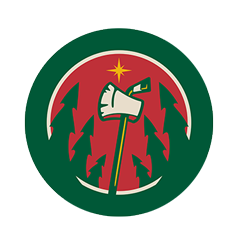
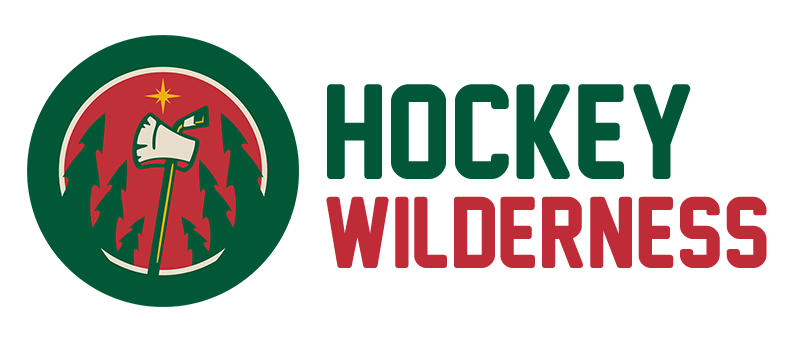


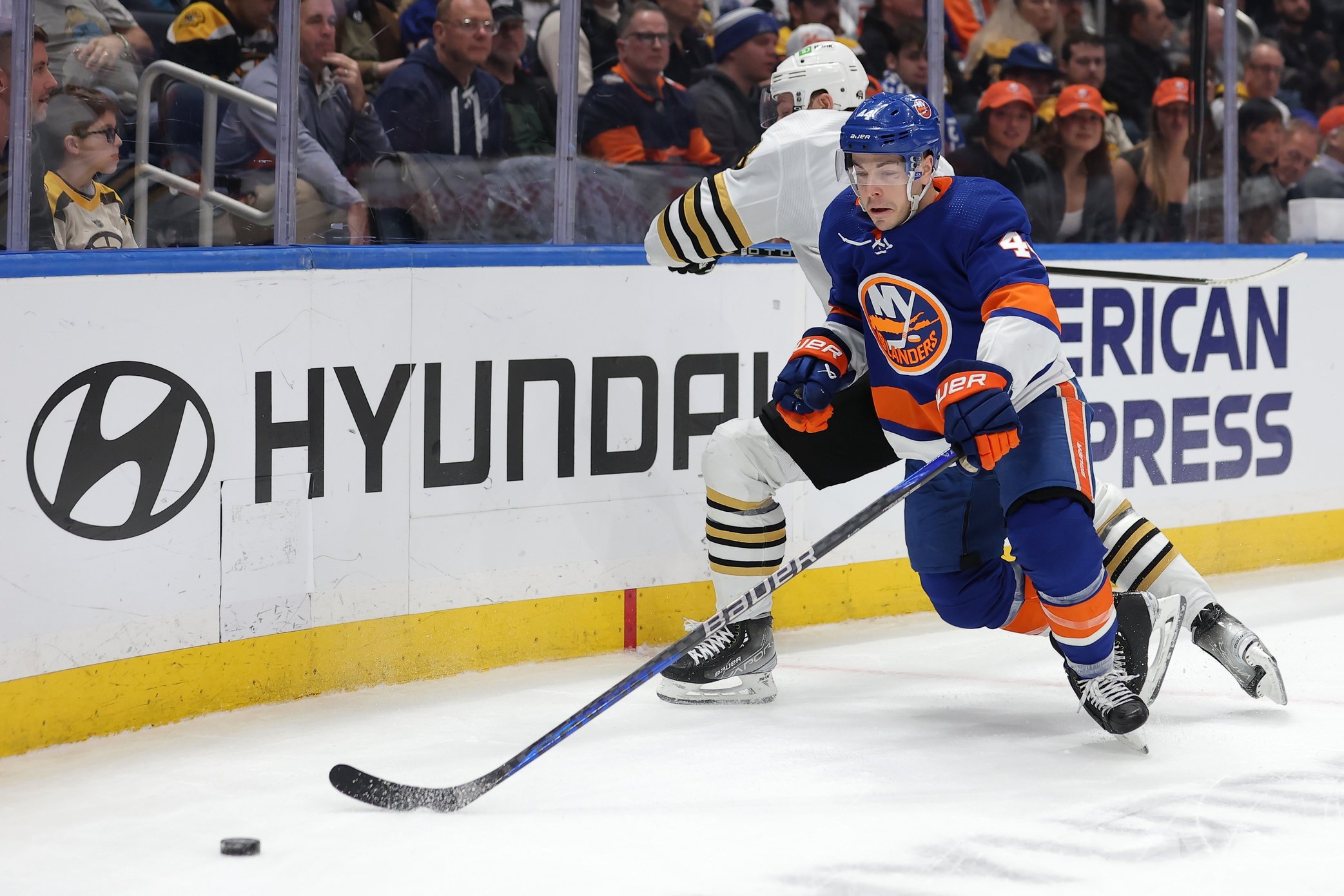
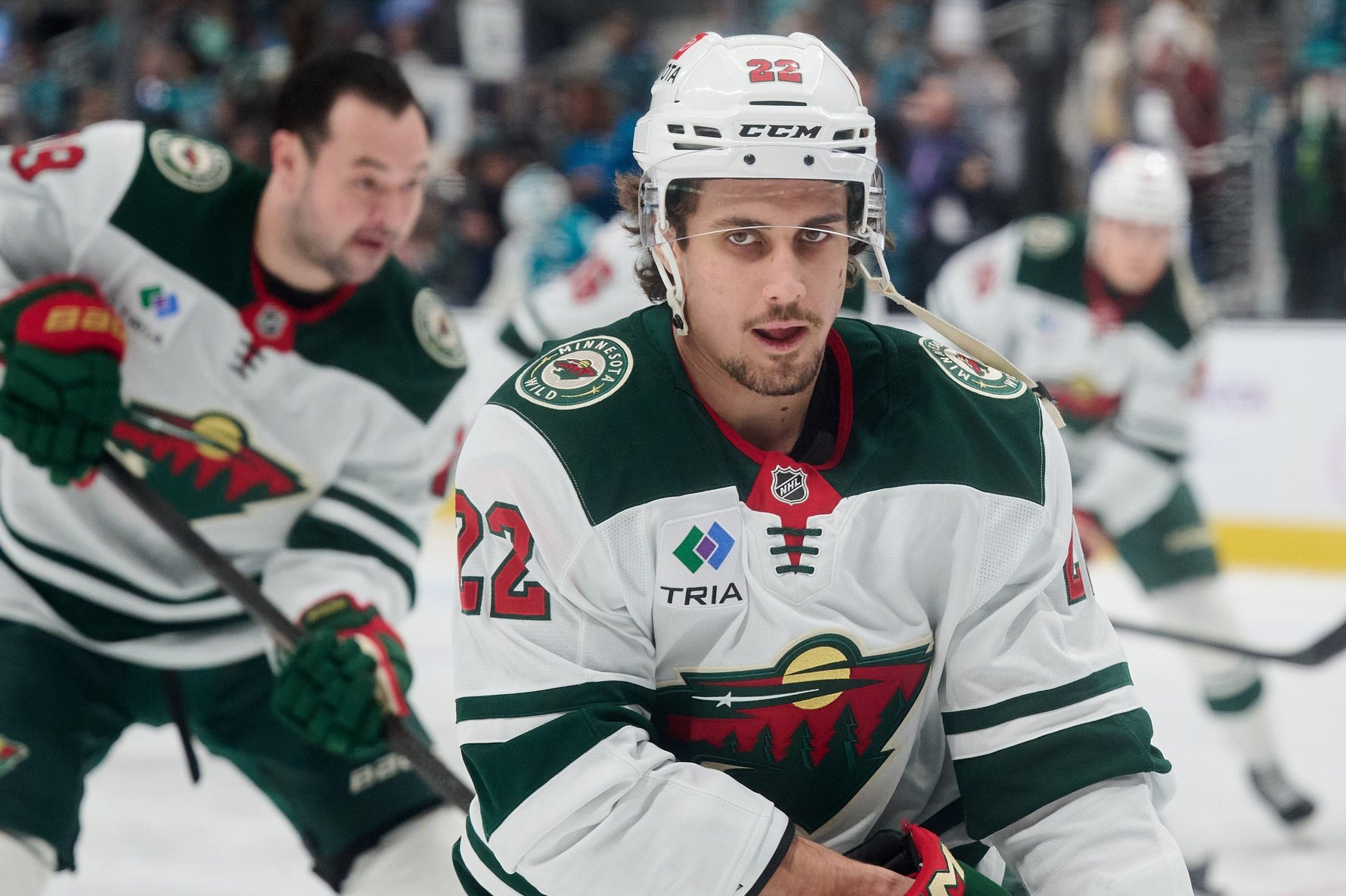

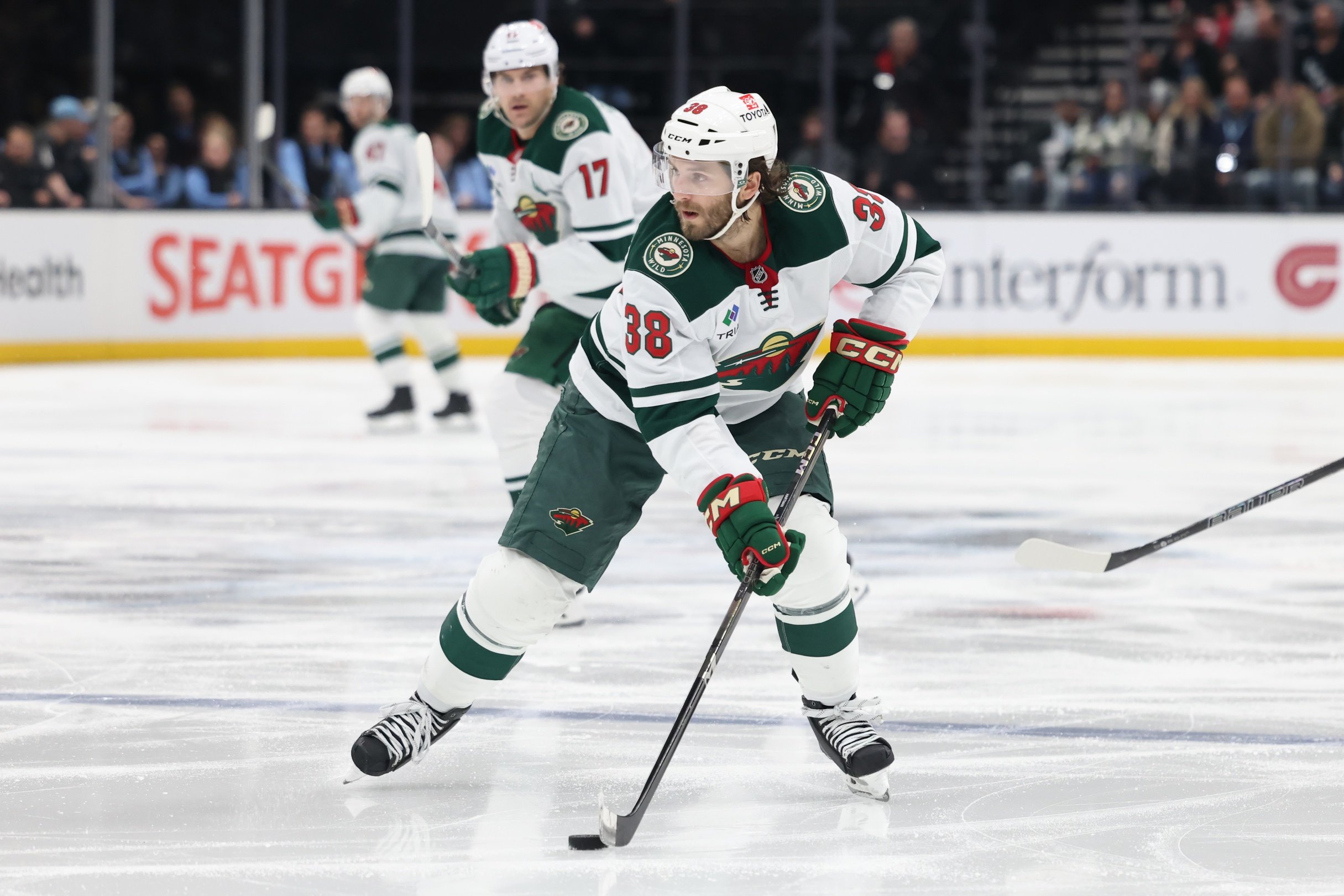
.jpg.17ec54875caeefb6f5db84ae1bf31768.jpg)
.jpg.1b886a6d0d46dd11c091362234ef681c.jpg)
.jpg.d53a1dcac741e9c940a5a08a1b0eb8a0.jpg)
